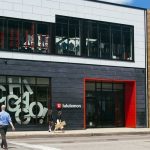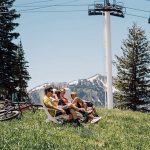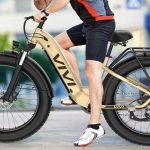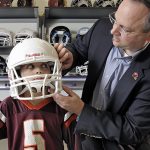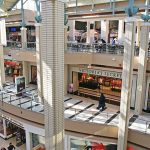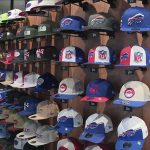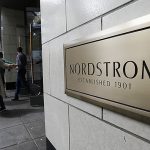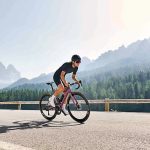Hibbett Sporting Goods reiterated its commitment to brands last week, shrugging off analysts suggestions about the opportunity in private label. Why an analyst would want to tinker with this model is a mystery as Hibbett just keeps posting strong performances each quarter. The retailer had a steep hill to climb in the first quarter ended April 30 against a year-ago quarter that boasted nice high-single-digit comp store sales gains. They delivered comp results nearly matching the gains last year and pushed net income up by more than a third in the process.
The comparisons may get a bit easier going forward as they now anniversary a second quarter last year that saw licensed apparel sales hit the wall and comps turn negative in June and July after a mid- to high-single-digit performance in May.
Chairman and CEO Mickey Newsome said that May comps are off to a good start for the second quarter, up in mid-singles for the first few weeks of May versus that strong performance last year. The upside should come as the retailer heads into back-to-school with higher-priced, better-margin, and very hot performance footwear and apparel poised to do well for the period.
As for the first quarter, Mr. Newsome said that February was “very strong”, with comps up in double-digits for the period. March and April were up in mid-singles, with April “slightly stronger” than March.
Licensed apparel was down double-digits, with pro licensed the main culprit in the decline. A major slowdown in NBA licensed product may be at the core of the double-digit decline in pro licensed, an area HIBB is planning to be “down significantly” going forward. College was down in low-single-digits. HIBB sees margins improving as they anniversary higher inventories and more markdowns from last year. They hope to get the college piece “back to flat”, but the pro business is expected to stay negative.
Branded apparel was up double-digits for the period, with Nike, Under Armour, and adidas called out as key performers in the womens category. Jeff Rosenthal, VP of merchandising, said that technical fabrics continue to “perform well” in womens apparel. Nike and UA were the top mens contributors. Urban apparel was said to “push very, very well”, with brands like Enyce, Scar Face, and Dickies the key performers.
Footwear was also up double-digits, with mens, womens, kids, and cleats all up for the period. Nike, Asics, Mizuno, and Reebok were highlighted, with Shox, Impax, NB 554s, and the Nike MCS Keystone cleat cited as key styles or categories. Rosenthal said that the K-Swiss business has been “pretty strong”, but they have seen some slowdown in other Classics footwear. He said 574s continue to be strong and that “even some classic Reebok still continue to be fine in certain markets.”
Equipment was up in high-singles, with skateboards called out as a key performer. Baller bands, Nike baseball gloves, Easton Stealth baseball bats, and Ab Loungers were also cited as key contributors for the period in Equipment.
The gross margin improvement in the period was attributed to improved product margins in footwear and equipment as well as better sell-through and reduced aged inventories. Average inventories per store were down approximately 2% at period-end. HIBB did see lower year-on-year margins in apparel, due primarily to a shift to branded apparel from higher-margin licensed goods.
HIBB opened 15 new stores and closed four stores in Q1 for a net gain of 11 doors versus just five new doors in Q1 last year, an acceleration Mr. Newsome attributed to more real estate people getting up to speed. Hibbett finished the quarter with 493 stores in operation.
Hibbett spent $19 million in stock repurchases in the first quarter and still ended the quarter with about $61 million in cash, roughly 50% higher than the same time last year. They expect to end the year with more than $90 million on-hand, but will discuss options for the use of cash at their next Board meeting.
The Board recently increased the stock repurchase authorization to $40 million, but shares are starting to get expensive. Still, any slowdown in the share buy-back could signal less faith in continued share price gains.
For second quarter, HIBB sees diluted EPS in the 17 cents to 21 cents per share range on a mid-single-digit comp store sales increase. For the year, diluted EPS is estimated to be in the $1.32 to $1.38 per share range on the same mid-singles comp store sales growth.
>>> While less aged inventory, fewer markdowns, and higher ASPs should help boost Q2, can the conservative commitment to inventory hinder even better results?
| Hibbett Sporting Goods, Inc. | |||
| Fiscal First Quarter Results | |||
| (in $ millions) | 2005 | 2004 | Change |
| Total Sales | $114.8 | $96.5 | +19.0% |
| Gross Profit % | 34.4% | 33.4% | +100 bps |
| SG&A % | 17.7% | 17.8% | -10 bps |
| Net Income | $10.7 | $8.0 | +33.9% |
| Diluted EPS | 46¢ | 33¢ | +39.4% |
| Comp Sales | +8.2% | +8.8% | |
| Inven @ qtr-end | $3.8 | $2.8 | +36.7% |

